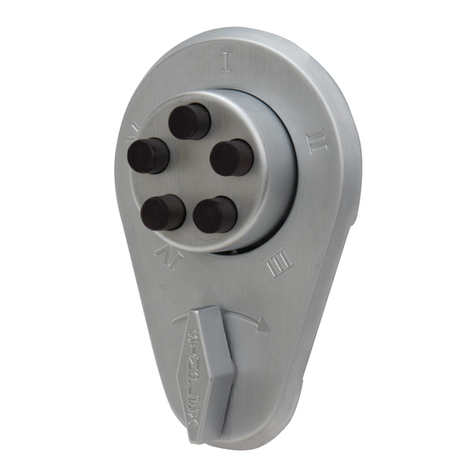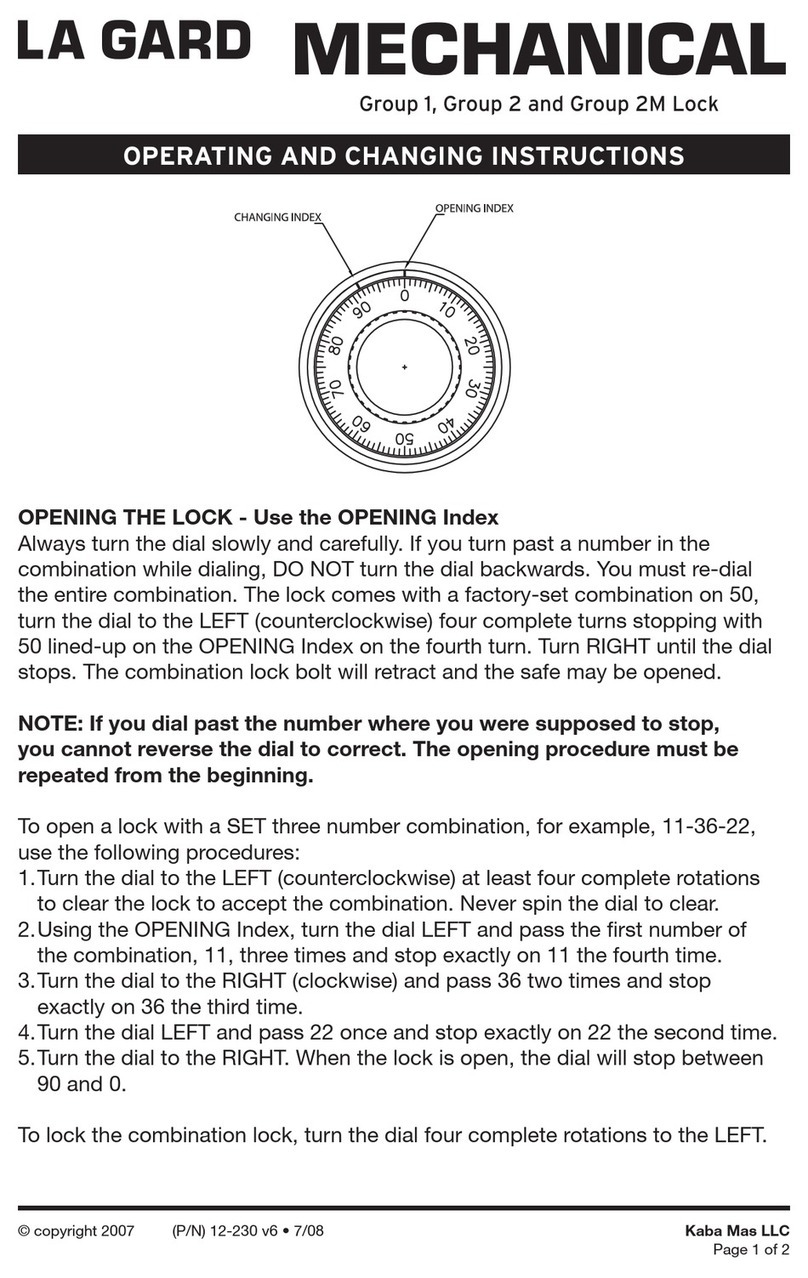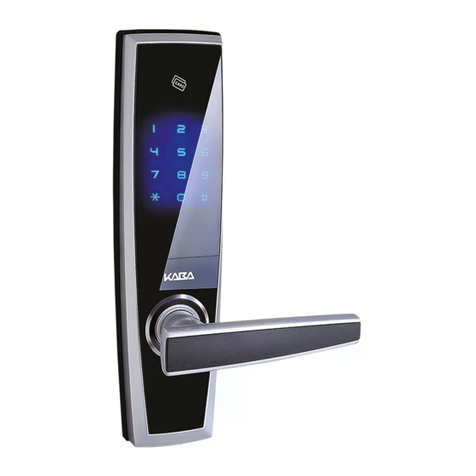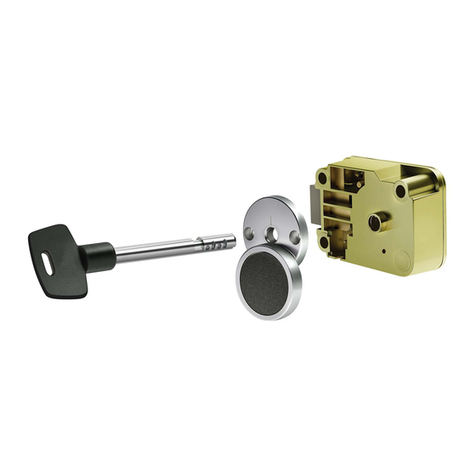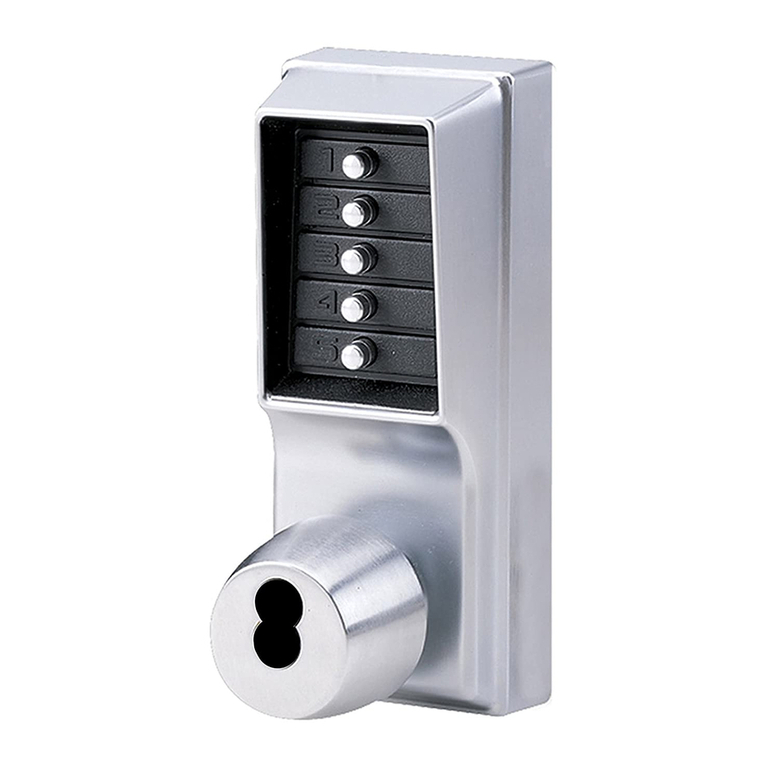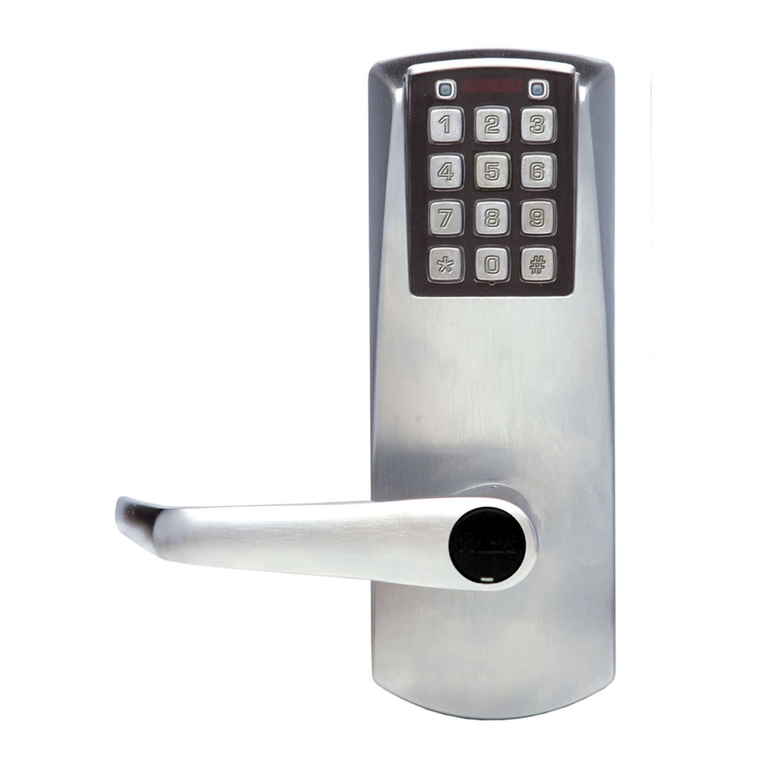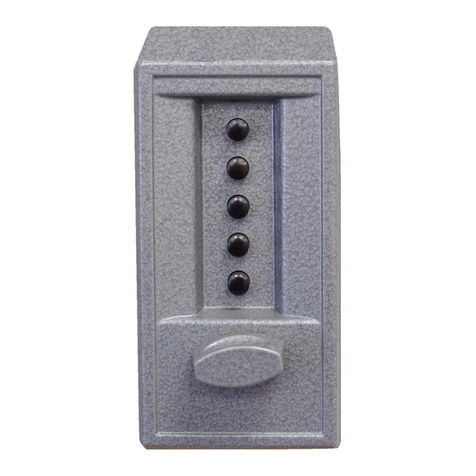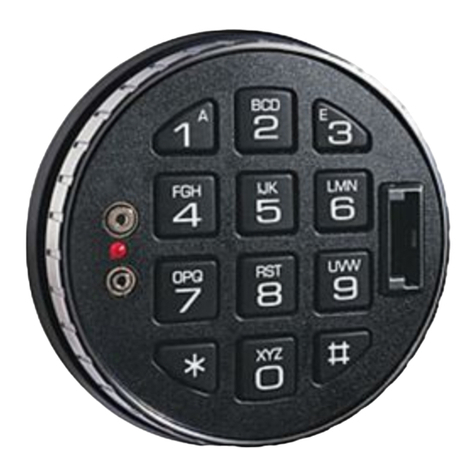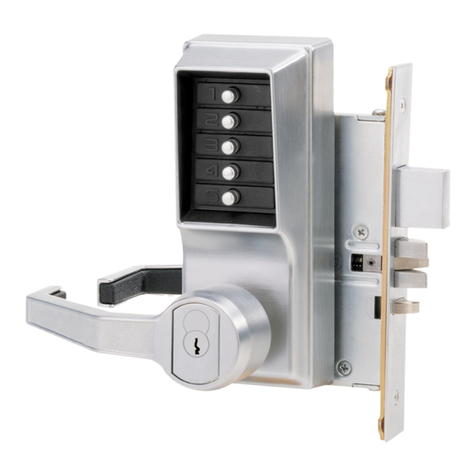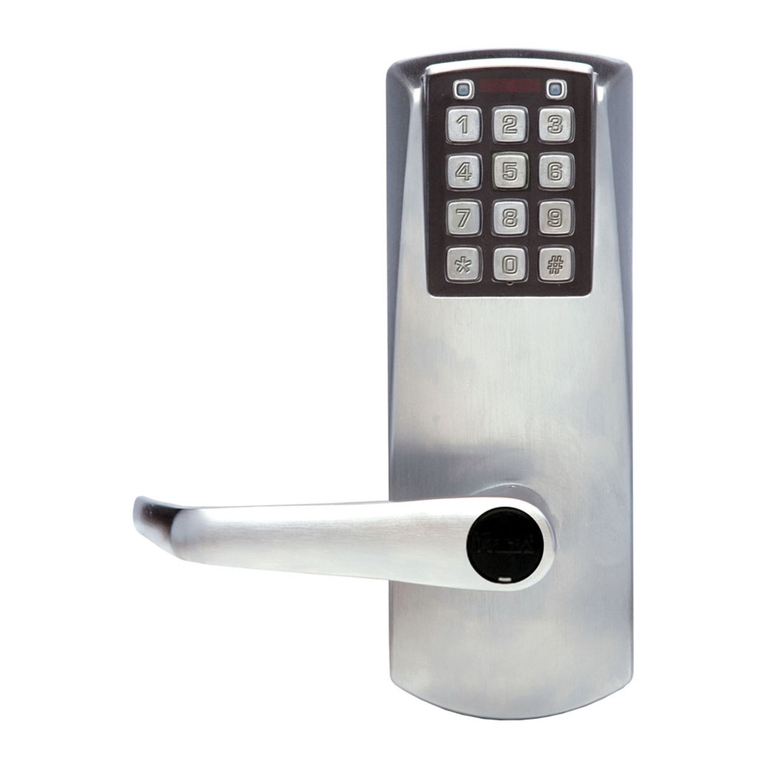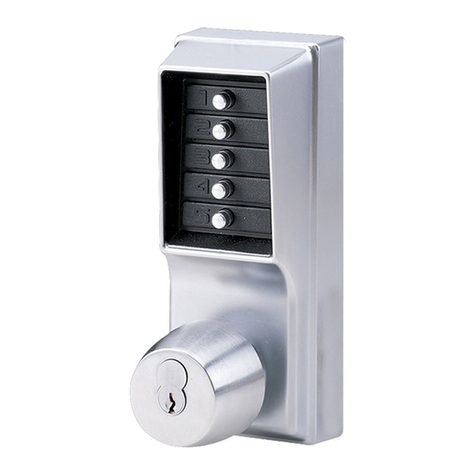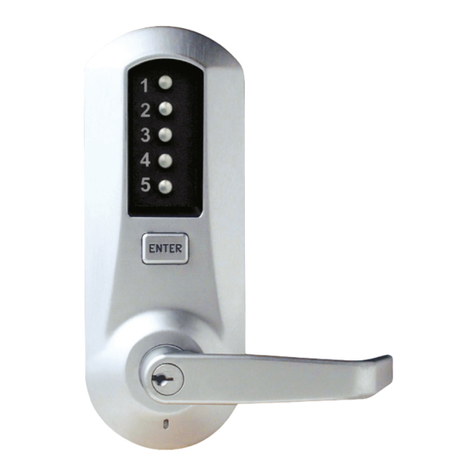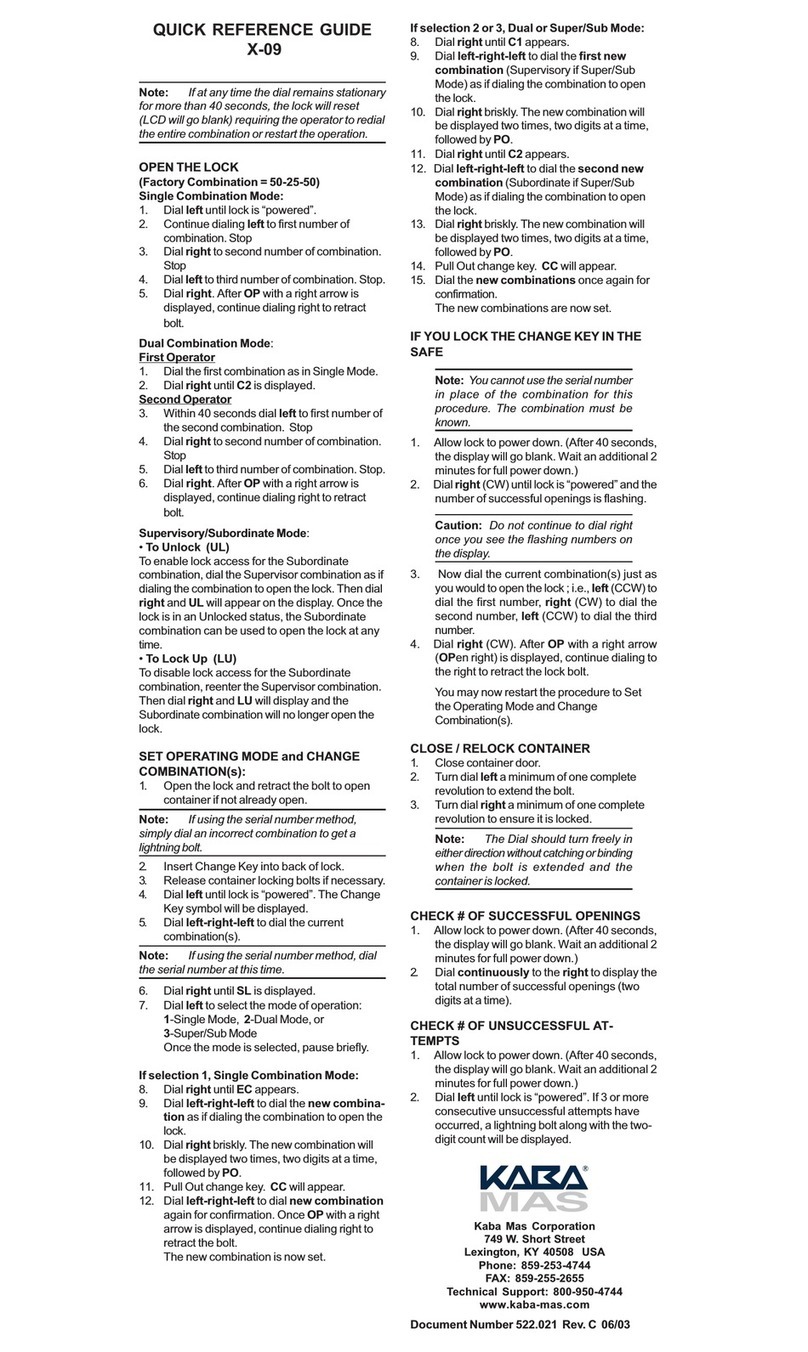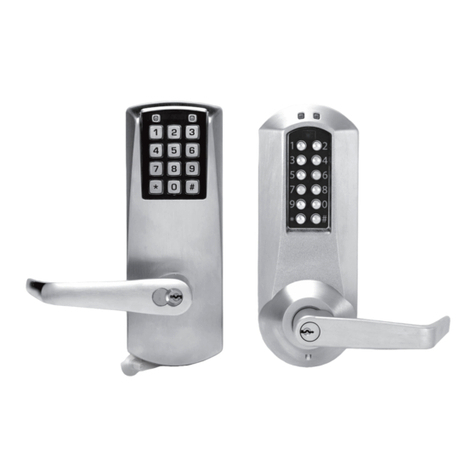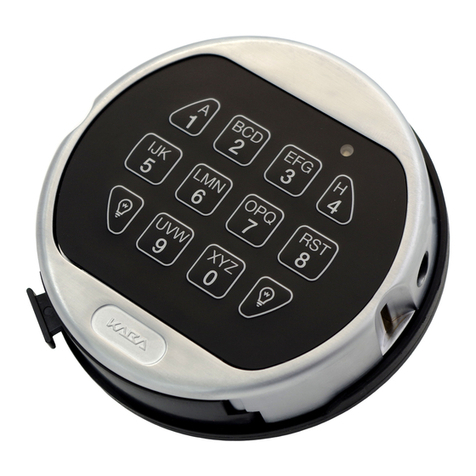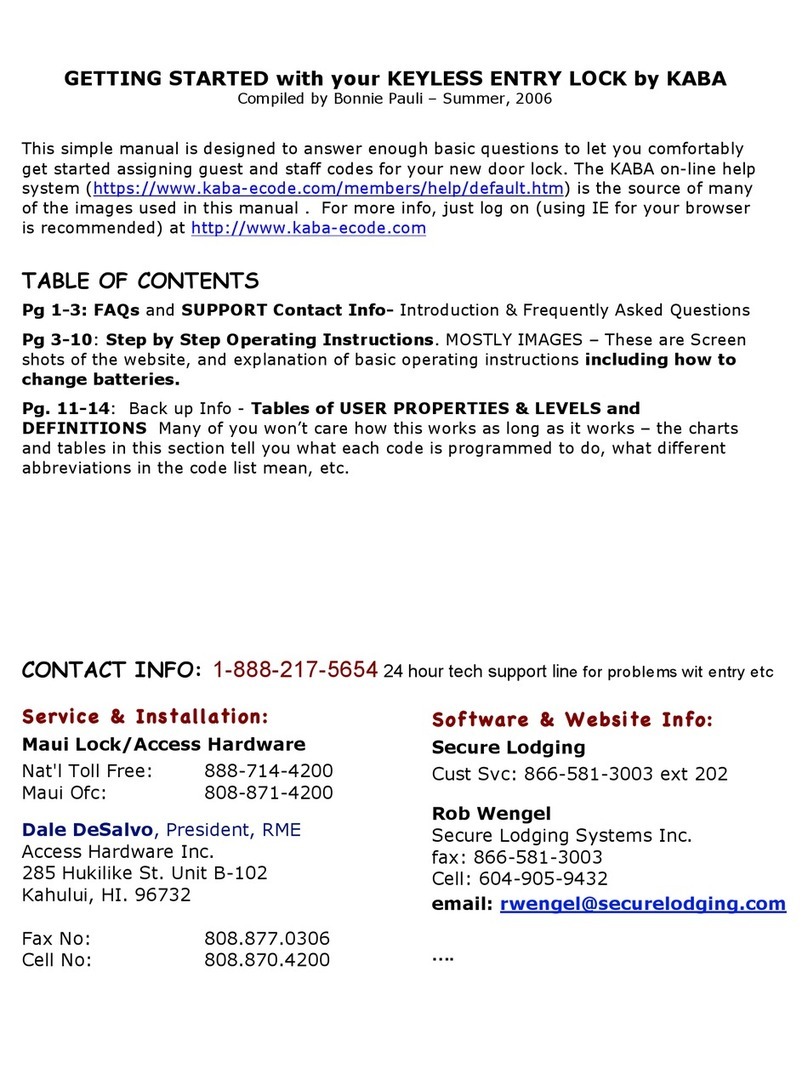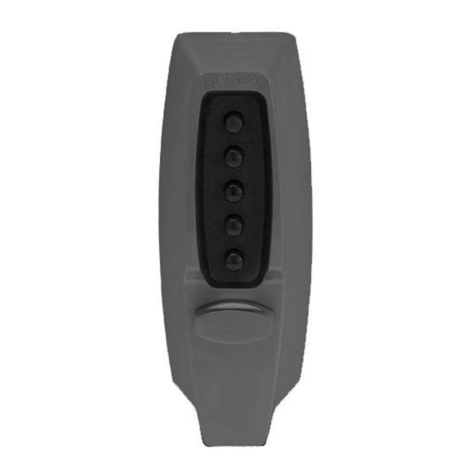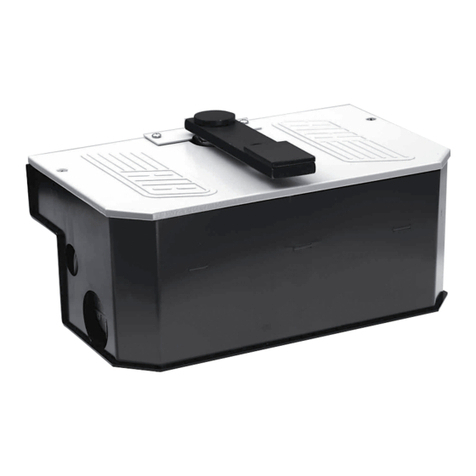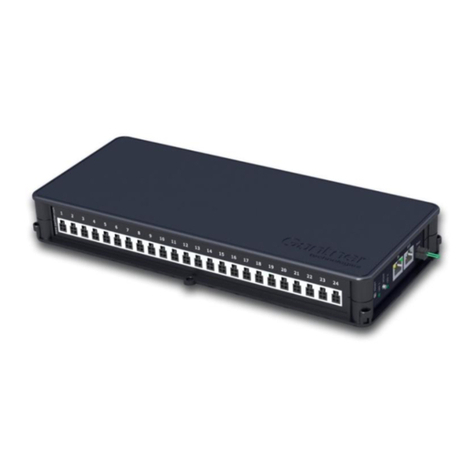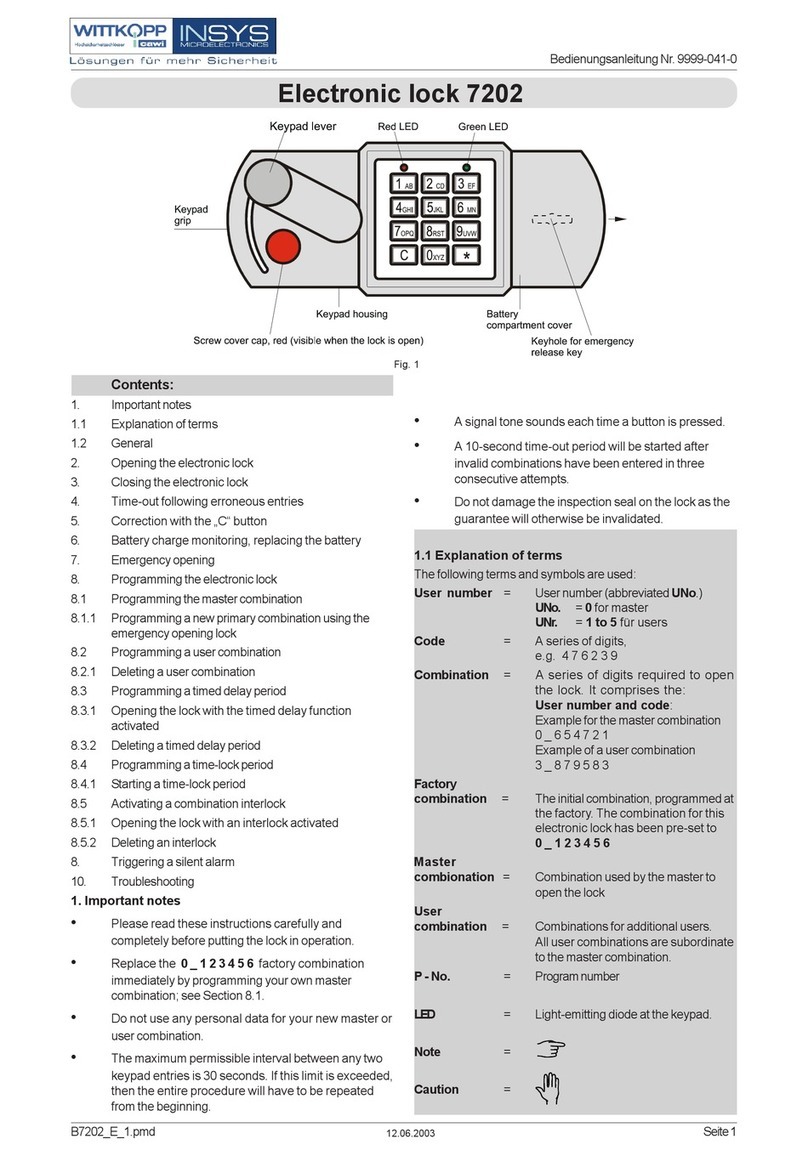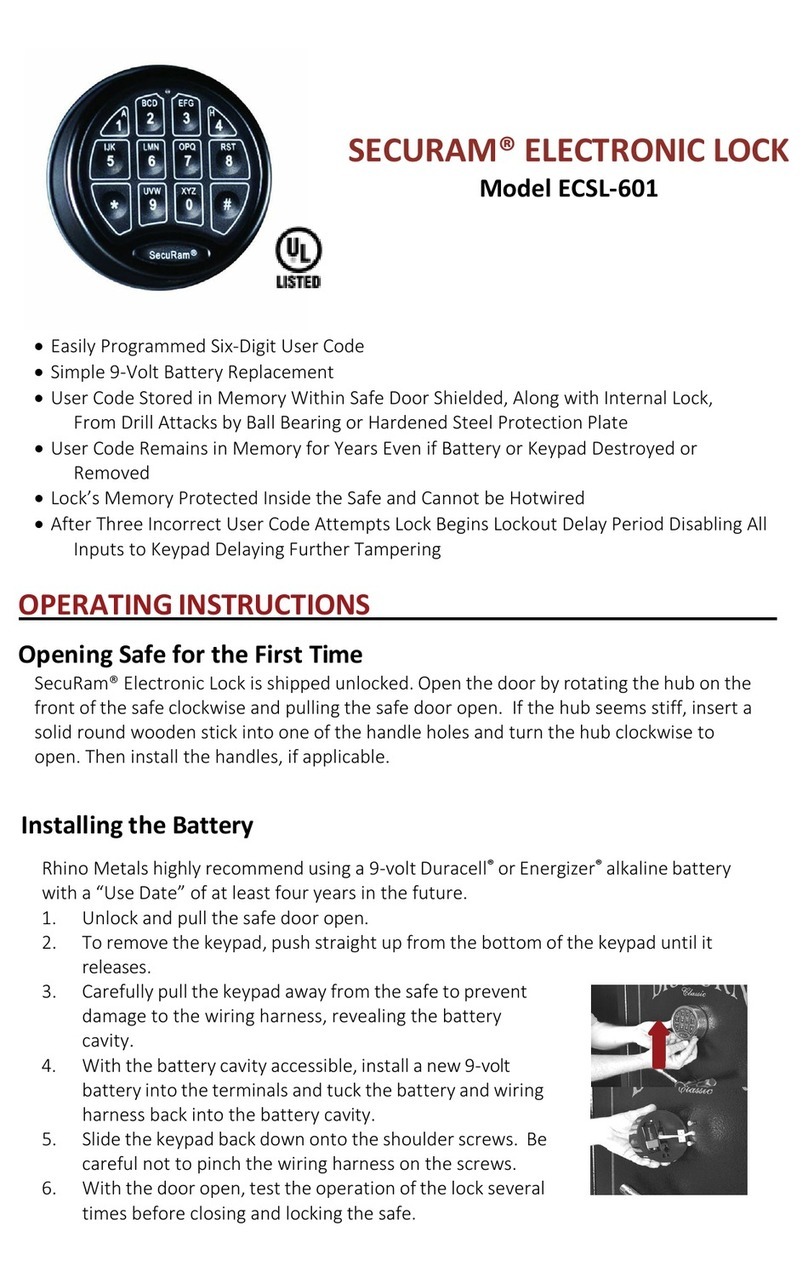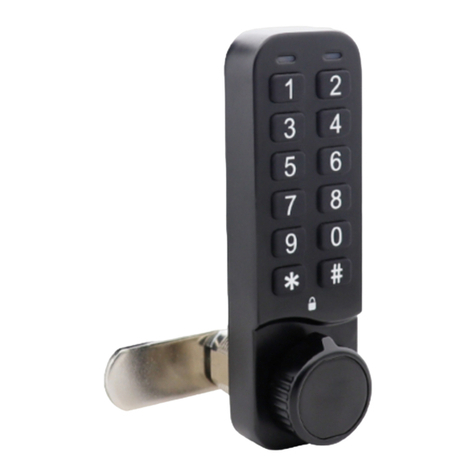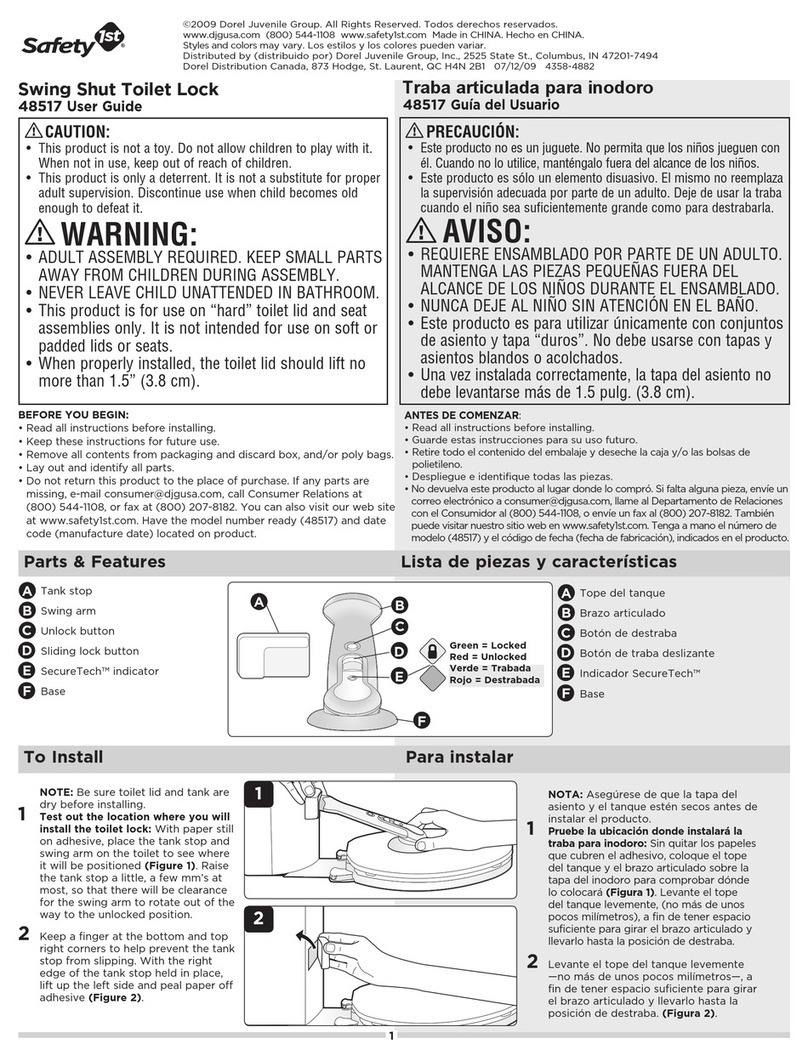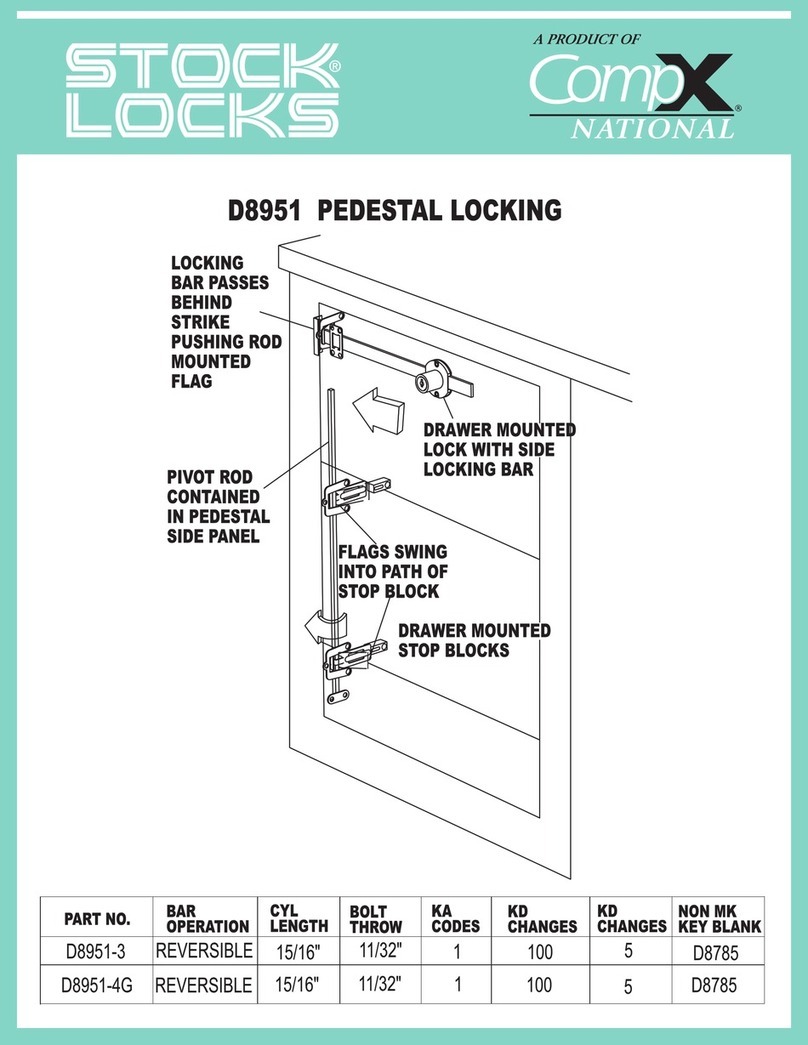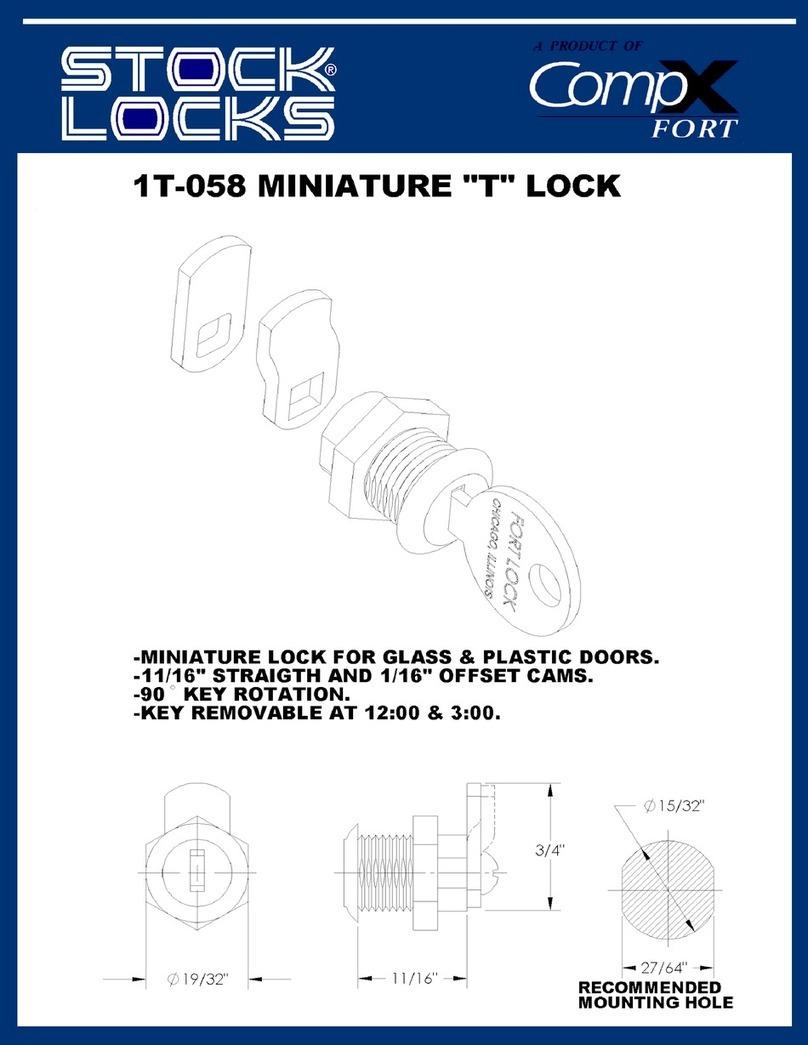
10
CDrilling Holes in the Door
CAUTION: Positioning and drilling must be
done straight to ensure trouble free operation
of the 7100 Series lockset. Improper drilling
may result in excessive force being exerted
on the lock which may result in the premature
wearing of its mechanical parts.
You must do C-1 first; otherwise, it will be
impossible to drill the 1⁄4" (6 mm) holes.
1) Use a 1⁄4" (6 mm) drill bit to drill the four
holes marked A,(Figure 3-1.)
NOTE: Begin drilling at a slow speed and
increase the speed gradually until the tip of
the drill bit emerges from the other side of the
door. Repeat this procedure from the opposite
side of the door. This technique will prevent
splintering of the door or breaking the drill bit.
2) Use a hole saw with pilot bit to make
the 15⁄8" (41 mm) hole (B). Apply pressure
evenly until the circular blade cuts the first
side of the door and the tip of the pilot bit
emerges through the other side, then stop.
Drill from the other side until the 15⁄8" (41 mm)
hole is completed.
3) Repeat Step C-2 for the 3⁄4" (19 mm) hole, (C).
4) The final 1" (25 mm) hole (D) is cross-
bored through the edge of the door.
Carefully bore 4" (10 cm) deep,
(Figures 3-1 & 3-2.)
Perforación de orificios en la puerta
CUIDADO: Tanto el posicionamiento como la
perforación deben ser hechos directamente
para asegurar que el cerrojo Serie 7100 fun-
cione sin problemas. Si la perforación no está
bien hecha se puede ejercer fuerza excesiva
sobre la cerradura, lo cual puede producir el
desgaste prematuro de sus partes mecánicas
.
Primero se debe realizar el paso C-1; de lo
contrario, será imposible perforar los orifi-
cios de " (6 mm).
1) Usar una broca de " (6 mm) para perforar
los cuatro orificios marcados con la letra
A,(Figura 3-1.)
NOTA: Comenzar a perforar a baja velocidad
y aumentar la velocidad gradualmente hasta
que la punta de la broca salga por el otro lado
de la puerta. Repetir este procedimiento
desde el lado opuesto de la puerta. Esta téc-
nica evitará que se astille la puerta o que se
rompa la broca.
2) Usar una sierra perforadora con broca
piloto para hacer el orificio de 1" (41 mm)
(B). Ejercer presión de manera pareja
hasta que la hoja circular corte el primer
lado de la puerta y la punta de la broca
piloto salga por el otro lado, luego detener
la sierra. Perforar desde el otro lado hasta
completar el orificio de 1" (41 mm).
3) Repetir el Paso C-2 para el orificio de "
(19 mm) (C).
4) El último orificio de 1" (25 mm) (D) se per-
fora cruzado a través del borde de la puer-
ta. Perforar con cuidado hasta una profun-
didad de 4" (10 cm) (Figuras 3-1 y 3-2.)
